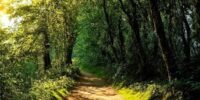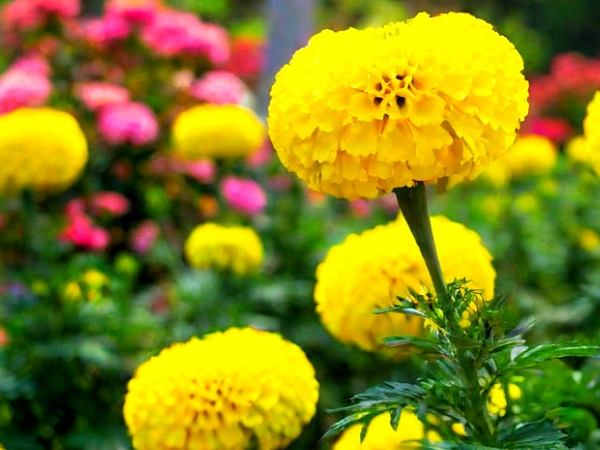🌱URBAN FORESTRY: Branches of the Future: Emerging Trends and Technologies.
Where Steel Meets Seedling: A Glimpse into the Urban Forest of Tomorrow🌱🌿
Imagine a cityscape where towering trees, adorned with shimmering sensors, whisper secrets to the wind. Drones, like graceful hummingbirds, flit through the canopy, their cameras capturing a symphony of green. And beneath the surface, a network of intelligent roots and data streams, orchestrating a ballet of growth and resilience.
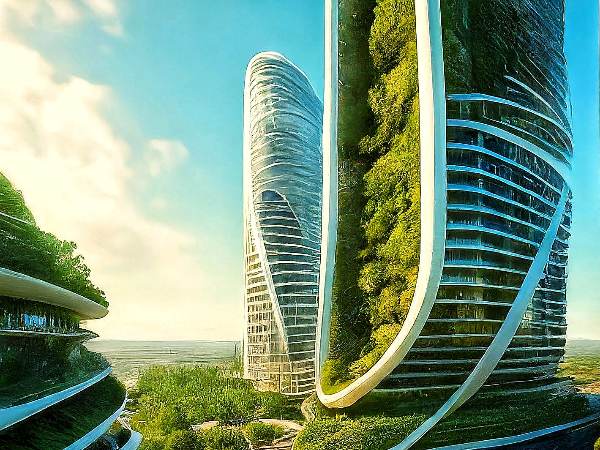
This is not a scene from a science fiction novel, but a glimpse into the future of urban forestry, where technology and nature intertwine to create a greener, healthier, and more sustainable urban landscape. In this article, we will embark on a journey through the cutting edge of urban forestry, exploring the emerging trends and technologies that are revolutionizing the way we interact with and manage our green spaces. Prepare to be inspired by the boundless possibilities that lie ahead, as we witness the fusion of human ingenuity and nature’s wisdom in shaping the cities of tomorrow.
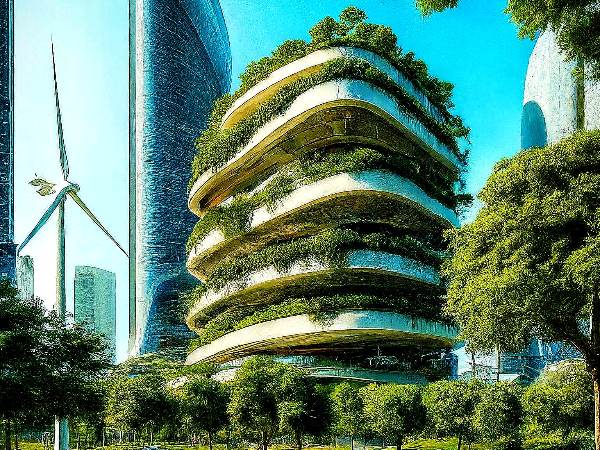
Smart Trees and Sensors: The Internet of Trees🌱🌿
In the urban forest of the future, trees are not just silent sentinels; they are active participants in the urban ecosystem, communicating their needs and health status through a network of sensors and data streams. Imagine trees equipped with tiny, unobtrusive sensors that monitor everything from soil moisture and nutrient levels to air quality and light exposure. These sensors, connected to a central network, provide real-time data that can be used to optimize tree care and management.
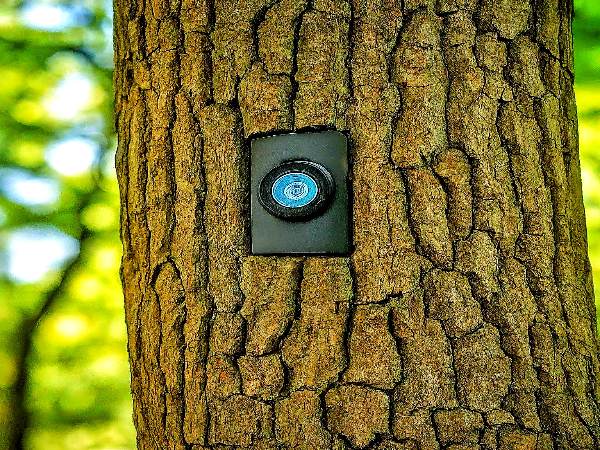
For instance, if a tree is experiencing drought stress, its sensors can trigger an automated irrigation system to deliver targeted watering. If a pest infestation is detected, arborists can be alerted and take swift action to prevent its spread. This proactive approach to tree care can significantly improve the health and longevity of urban forests, ensuring that they continue to provide their invaluable ecosystem services for generations to come.
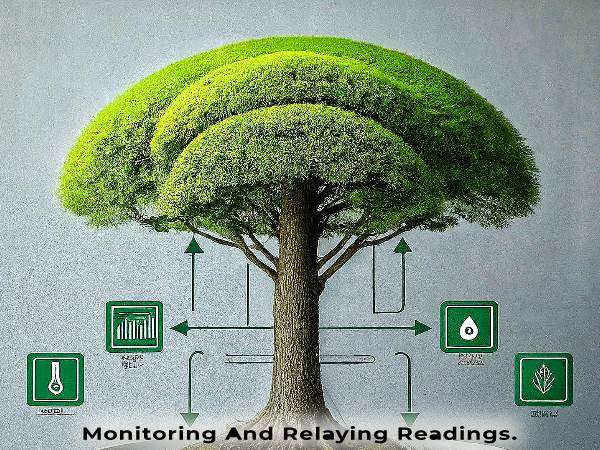
But the potential of smart trees goes beyond individual monitoring and care. Imagine a network of interconnected trees, communicating with each other and with the urban infrastructure. This “internet of trees” could revolutionize the way we manage our cities, allowing us to optimize traffic flow based on real-time air quality data, adjust street lighting based on canopy cover, and even predict and mitigate the impact of extreme weather events.
Drone-Based Monitoring: Taking Urban Forestry to New Heights 🌿
In the realm of urban forestry, the sky’s the limit, quite literally! Drones, those agile unmanned aerial vehicles, are revolutionizing the way we monitor and manage our green spaces, providing a bird’s-eye view of the urban canopy and unlocking a wealth of data that was once inaccessible.
Equipped with high-resolution cameras and advanced sensors, drones can efficiently survey vast areas of urban forests, capturing detailed images and collecting valuable information about tree health, growth patterns, and environmental conditions. This data can be used to create comprehensive tree inventories, assess the impact of pests and diseases, and identify areas in need of restoration or new plantings.
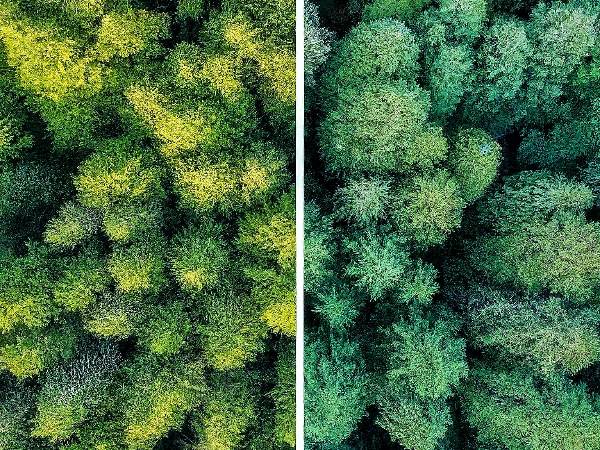
Imagine a drone effortlessly gliding over a sprawling urban park, its camera capturing the intricate details of the canopy, revealing hidden pockets of stress or disease that might be invisible from the ground. This aerial perspective allows arborists and urban foresters to make informed decisions about tree care and management, ensuring the long-term health and vitality of the urban forest.
DID YOU KNOW🌱 🌿
that the practice of organic gardening can help reduce greenhouse gas emissions and promote soil health?🍅💪
But the potential of drones extends beyond monitoring and assessment. These versatile flying machines can also be used to plant trees in hard-to-reach areas, such as steep slopes or remote locations. Equipped with specialized seed pods, drones can disperse seeds over large areas, accelerating reforestation efforts and restoring degraded landscapes.
Furthermore, drones can deliver targeted treatments to individual trees, such as fertilizers or pesticides, minimizing the environmental impact and maximizing efficiency. This precision approach to tree care can help to combat pests and diseases, promote healthy growth, and ensure the long-term sustainability of the urban forest.
AI and Machine Learning: The Brainpower Behind the Green 🌿
In the age of big data, artificial intelligence (AI) and machine learning are emerging as powerful tools for managing and understanding the complex dynamics of urban forests. These intelligent algorithms can analyze vast amounts of data collected from sensors, drones, and other sources, uncovering patterns and insights that would be rather difficult for us to discern on our own.
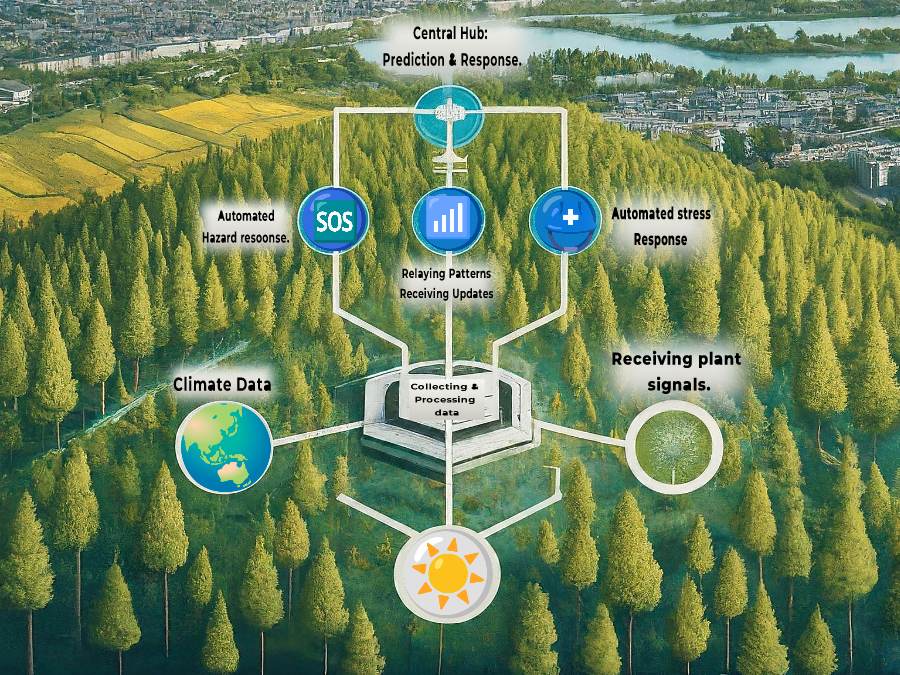
Imagine an AI system that can predict which trees are most likely to succumb to disease or stress, allowing arborists to take preventive action before it’s too late. Picture a machine learning algorithm that optimizes irrigation schedules based on real-time soil moisture data, conserving water and promoting healthy growth. Envision an AI-powered tool that identifies the ideal locations for new tree plantings, maximizing their ecological benefits and aesthetic appeal.
DID YOU KNOW🌱 🌿
that the practice of community gardening can promote social interaction, improve mental health, and increase access to fresh produce?🍅💪
These are just a few examples of how AI and machine learning can revolutionize urban forestry planning and management. By harnessing the power of data and intelligent algorithms, we can make more informed decisions, optimize resource allocation, and create more resilient and sustainable urban forests.
The Rise of Urban Agriculture and Food Forests: Growing Food, Building Community🌱🌿
In the heart of our cities, a quiet revolution is taking root – literally! Urban agriculture, the practice of cultivating food in urban areas, is transforming vacant lots, rooftops, and even balconies into productive green spaces. From community gardens and rooftop farms to vertical hydroponic systems and backyard orchards, urban agriculture is reconnecting people with the source of their food and fostering a sense of community and self-sufficiency.
One particularly inspiring form of urban agriculture is the food forest, a diverse and self-sustaining ecosystem that mimics the structure and function of a natural forest. Imagine a vibrant tapestry of fruit trees, berry bushes, edible perennials, and nitrogen-fixing plants, all working together to create a bountiful and resilient food source. Food forests not only provide fresh, healthy produce but also enhance biodiversity, improve soil health, and sequester carbon.
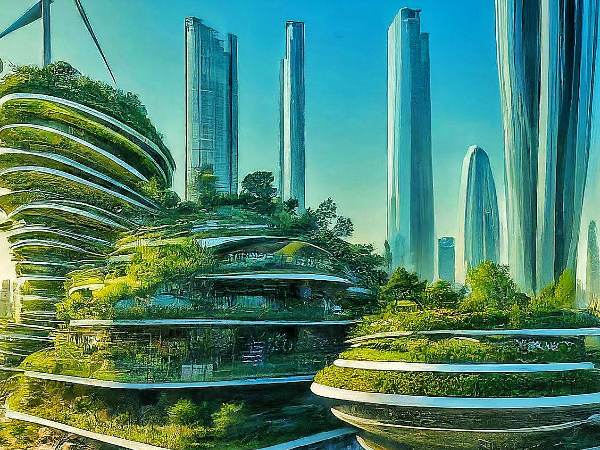
The benefits of urban agriculture and food forests are manifold. They contribute to food security by providing access to fresh, nutritious food in areas where it may be scarce or expensive. They promote community building by bringing people together to share knowledge, skills, and resources. They enhance environmental sustainability by reducing food miles, conserving water, and promoting biodiversity.
Imagine a bustling community garden where neighbors gather to tend to their plots, sharing stories and laughter as they harvest their crops. Picture a rooftop farm buzzing with activity, as bees pollinate flowers and vegetables thrive in the urban sunlight. Envision a food forest, a haven of abundance and biodiversity, providing sustenance and inspiration for generations to come.
Urban agriculture and food forests represent a powerful shift towards a more sustainable and resilient food system, one that empowers individuals and communities to take control of their food production and reconnect with the natural world. They offer a glimpse into a future where cities are not just concrete jungles but vibrant ecosystems that nourish both body and soul.
Building Resilient and Sustainable Cities: The Role of Urban Forestry in a Changing World🌱🌿
As our cities grapple with the challenges of climate change, urbanization, and resource depletion, urban forests emerge as crucial allies in building a more resilient and sustainable future. Trees and green spaces provide a multitude of ecosystem services that help to mitigate the impacts of these challenges and create more livable and equitable communities.
From reducing air pollution and stormwater runoff to sequestering carbon and regulating temperatures, urban forests play a vital role in creating healthier and more sustainable cities. They also provide critical habitat for wildlife, enhance biodiversity, and promote human health and well-being.
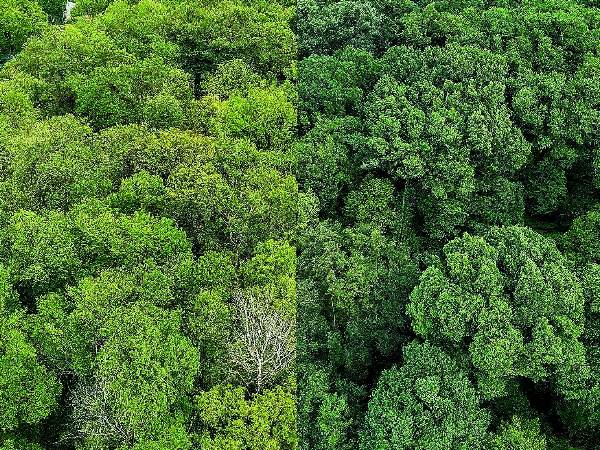
Technology is playing an increasingly important role in helping us monitor, manage, and protect urban forests in the face of these challenges. Sensors, drones, and AI-powered tools allow us to collect and analyze vast amounts of data, enabling us to make more informed decisions about tree care, planting, and resource allocation.
Moreover, urban forestry can contribute to the United Nations Sustainable Development Goals, a set of 17 global goals aimed at ending poverty, protecting the planet, and ensuring prosperity for all. By promoting sustainable urban development, enhancing ecosystem services, and fostering community engagement, urban forestry can play a crucial role in achieving these ambitious goals.
Ethical Considerations: Navigating the Intersection of Technology and Nature🌱🌿
As we embrace the exciting possibilities that technology offers for urban forestry, it’s crucial to tread thoughtfully and consider the ethical implications of our actions. While technology can be a powerful tool for conservation and sustainability, it’s essential to ensure that its use aligns with our values and respects the delicate balance of the natural world.
Disrupt Natural Behaviors🌱🌿
One key ethical consideration is the potential impact of technology on wildlife and ecosystems. For instance, while drones can be invaluable for monitoring and managing urban forests, their noise and presence can disturb wildlife and disrupt natural behaviors. Similarly, the widespread deployment of sensors and other monitoring devices raises questions about privacy and surveillance in natural spaces.
Sense Of Control🌱🌿
Another ethical concern is the potential for technology to create a sense of control over nature. While we can use technology to monitor and manage ecosystems, we must remember that nature is inherently unpredictable and complex. We cannot engineer our way out of environmental problems; we must work in harmony with nature, respecting its rhythms and limitations.
Equity And Access🌱🌿
Furthermore, the use of technology in urban forestry raises questions about equity and access. Will the benefits of these advancements be shared equitably across all communities, or will they exacerbate existing disparities? It’s crucial to ensure that technology is used to promote environmental justice and empower marginalized communities, rather than further entrenching inequalities.
As we navigate the intersection of technology and nature, it’s essential to adopt a precautionary approach, carefully considering the potential risks and benefits of each new innovation. We must strive to use technology in a responsible and sustainable manner, prioritizing the long-term health and well-being of both people and the planet.
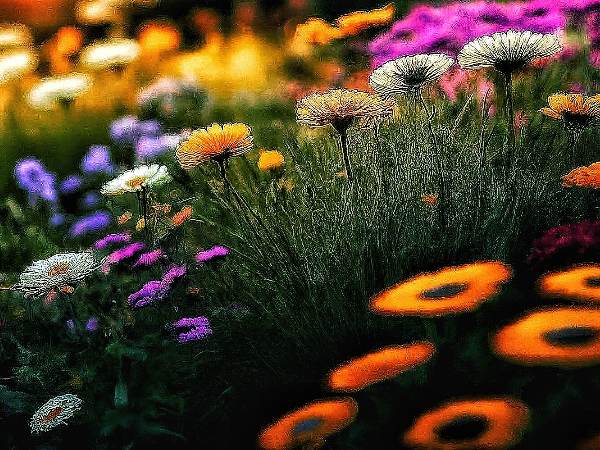
Conclusion: Embracing the Future with Wisdom and Wonder🌱🌿
The future of urban forestry is bright, illuminated by the promise of technological advancements that can help us create greener, healthier, and more resilient cities. From smart trees and drones to AI and urban agriculture, these emerging trends and technologies offer a glimpse into a world where nature and innovation coexist in harmony.
As we embrace these exciting possibilities, let us do so with wisdom and wonder, always mindful of the ethical implications of our actions. Let us use technology not to dominate nature but to understand and collaborate with it, creating urban forests that are both sustainable and awe-inspiring.
The journey towards a greener future is a collective one. Let us continue to explore, innovate, and advocate for the responsible and sustainable use of technology in urban forestry. Together, we can create cities where trees and technology intertwine, where nature’s wisdom guides our innovations, and where the urban forest thrives as a testament to our commitment to a better world.
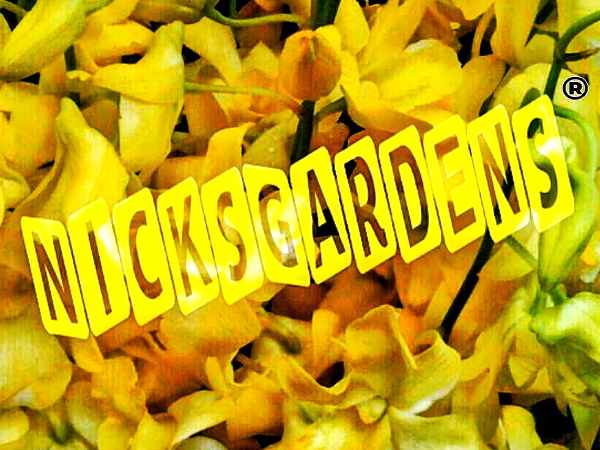
🌿 your personal paradise🌱✨
Close your eyes for a moment and imagine… Picture a symphony of colors as blossoms dance in the sun, their petals whispering secrets of the earth’s embrace. Breathe deep the intoxicating freshness of herbs, a melody of scents that soothes your soul and awakens your spirit. Feel the warmth of the sun on your skin and the earth’s energy pulse through your fingertips as you tend to your plants,
Feel the stress melt away as you relish the pure joy of harvesting your own homegrown bounty..
This is your personal paradise, where every bloom, every leaf, and every harvest brings you closer to nature’s magic. 🌱✨
🌱 🌱UNLEASH YOUR INNER BOTANIST: ✨
🌱 Discover fascinating facts and expert tips that will deepen your connection with the plant world. 🌱✨🌱✨
🌱 Your Q&A ask nick: [LINK]🌱✨
🌱🌱 EXPLORE THE ART OF SUSTAINABLE GARDENING:🌱✨
🌱 Learn how to nurture your plants while minimizing your impact on the environment. ✨🌱✨
🌱 ASK AN EXPERT: [LINK]✨
🌱 NicksGardens® Garden Makeover : [LINK]🌱
🌱 🌱 Ready to welcome the magic of nature into your home with a burst of color, freshness and life?” 🌱✨
🌱🌱YOUR GARDEN ADVENTURE BEGINS NOW🌱✨
🌱 Let NicksGardens® be your trusted guide as you embark on this exciting journey of growth and discovery. 🌱✨
